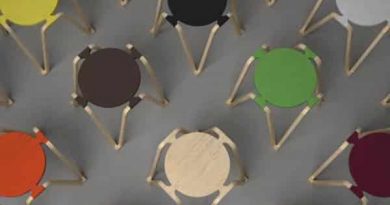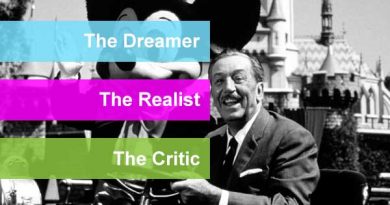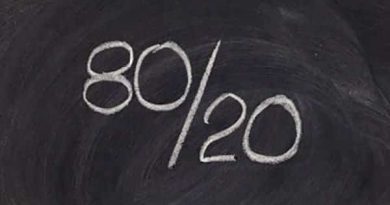How to Identify Talented Innovation Leaders?
Most of the designers who have worked within a poor management environment understand how this context can hinder their creativity and ability to innovate, which in turn, dramatically decrease the chances of innovation and creativity inside the organization. This leads us to the fact that an effective manager is a key factor in the innovation process’s success. In The Wall Street Journal Guide to Management published by Harper Business, Alan Murray indicated that management and leadership must go hand-in-hand. While they are not the same, they are linked and complement each other.
While the manager focuses on the administration process, the upper management decisions and maintaining existing process, the leader focuses on innovation, developing the process and more on people. This leads to a quick conclusion that inside the innovation process, we do not need a leader rather than just a manager.
However, the world has many managers comparing with few leaders. This leads us to the question what makes good innovation leaders? Leadership is a talent and related to the personality and psychology of the person. Many theories have attempted to answer this question in order to allow stakeholders to identify the next candidate to become a leader. Below is a brief description for each theory and it can be implemented to identify the best leader for innovative projects.
Trait Theory of Leadership (personality-based theory)
Trait theory is based on the person’s characteristics that can lead to effective innovation leaders. The theory assumes that leadership capabilities are based on the person individual characteristics. The research indicates a significant positive relation between leadership and personality. Trait theory suggests that these characteristics drive the person to have certain patterns of behavior, these patterns are consistence across situations and people are born with these traits.
During the 20th century, most research conducted focused on identifying the common shared traits that can make a great leader. The research suggested certain traits that can endow person with leadership capabilities are:
Ambition, energy and initiative
- Motivate others to reach a shared goal
- Honesty, integrity, reliable and open
- Self-confidence and belief in person’s ideas and abilities
- Capable of exercising good judgment and analytical ability
- Emotional control
- Social and community skills
- Knowledge and experience
- Responsible
While much research has validated the basis of the theory, it includes subjective judgment to determine the successful leader and there is a disagreement over which of the factors that are high priority traits that make a successful leader. Additionally, there is no specific combination of these traits that guarantee the successful leader. In respect to innovation, the above theory can be applied in a general sense; the traits discussed in the theory above serve the creativity and innovation function inside organization.
Behavioral Theories (behavior-based theories)
Unlike Trait theory that focused on the leader’s personal characteristics, Behavioral theory focuses on how the leader interacts in different situations. Based on the theory, there are four type of leaders based on their behavior:
- Task-oriented leaders, this type of leader focuses on achievements and goals. They unitize all the resources including people to achieve the organization’s goals. This type of leadership is appropriate when the goals need to be met in a short timeframe as to drive the team to provide high productivity.
- Concern for people, this type of leader put their team in high priority and gives much concern about their needs, interests and problems. They interact with the team as a human being rather than just a resource. This type is suitable to drive the people’s sense of innovation and creativity high. Putting the employees in high priority help them to think and reach more creative ideas.
- Autocratic leaders, this type of leaders make decisions without consulting other employees in the team. This type is helpful in crisis times, where there is no time to discuss decisions with the team.
- Democratic leaders, this type shares decision and discussion with the team and gives them the ability to share in the decision-making. This type is very similar to the “concern for people” model as it helps the team to innovate and brainstorm ideas to reach a highly creative output. It is also helpful when team agreement is required in order to take the decision.
While some innovation leaders have a stronger point in one model than the other, the optimum leader should practice all the four models during the project process. At the beginning of the project, models such as the “concern for people” and “democratic leader” are required to drive team members to innovate and reach creative ideas that achieve the project goals. In the crisis time, the autocratic model is required to take help the project to pass the critical time without failure.
Contingency Theories (situation-based theories)
Contingency theories try to address leadership from a different perspective. How does the good leader interact in a specific situation? The theories try to analyze the leader behavior in respect of the process and how the effective leader practices the two theories above during the project time. There are a number of theories that try to answer these questions under the umbrella of contingency theories. Fred E. Fiedler’s theory depends on the two factors; the leadership style and degree of influence.
Additionally, there is Hersey-Blanchard Situational Leadership theory. The theory is presented by Dr. Paul Hersy, the author of “The Situational Leader”, and Kenneth Blanchard, the author of “One-Minute Manager”. In this theory, there are four leadership styles:
- Telling (high task, low relationship), the leader tells the team what to do and how to do it
- Selling (high task, high relationship), the leader provides information and direction trying to sell their goal to the team
- Participating (low task, high relationship), the leader focuses on the relation between the team rather than giving directions. The leader share responsibilities and decision-making with the team
- Delegating (low task, low relationship), the leader passes out responsibilities to part of the team while monitoring the progress
Focusing on innovation and creativity, “selling” and “participating” provide high potential to build a effective and innovative process as it maintain both the business goals and relationship between the leader and the team, which is most likely to result in creative output.
French and Raven’s Five Forms of Power
Another dimension to judge effective leadership is power and how the leader influences the team members. French and Raven’s Five Forms of Power is one of the theories to focus on the power attribute and how the leader uses it to influence the employees. The theory that released in 1959 identifies the following:
- Legitimate, the leader depends on the formal position to give orders and expect compliance from others to these orders.
- Reward, the leader compensates the team members to obey formal orders and demands
- Expert, the leader expect the team to obey the orders due to the high experience and skills in the specified field
- Referent, the leader depends on the others respect to follow orders and apply demands
- Coercive, the leader depends on a punishment model where the team is afraid to get punished for not obeying orders
How to Define a Good Leader for the Innovation Process
There are many theories which try to define good innovation leaders and how to identify the goals of leadership based on different approaches. The example theories above have used approaches such as personal characteristics, behavior, interaction with situations and the use of power. In order to identify the appropriate leader of the innovation and creativity process, we need to compare the theories above within the process itself and identify the type of leaders who are able to achieve the creative process goals.
While the first Trait theory seems to be generic and apply to any type of innovation leaders, the following theories provide different types of behaviors and interaction that can affect the innovation process either positively or negatively. In the second Behavioral theories, the innovative leader should consider both the project goals and the team members equally. Creative thinking and brainstorming take a significant impact in innovative and creative projects. Therefore, models such as autocratic and task-oriented leader should be used wisely.
In another example, the “selling” and “participating” models provide a good leader for the innovation process. In respect to power theories, “reward”, “expert” and “referent” provide a successful environment to drive creativity among the team rather than the “coercive” model. Additionally, the good leader model is effected byother factors such as the geographic location, the team’s education, and the local culture for the team.
References and resources
The Wall Street Journal Essential Guide to Management by Alan Murray
The Situational Leader by Dr. Paul Hersey
One-Minute Manager by Kenneth Blanchard
Infed project by YMCA George William Collage







Nice collation of theories… the thing is you should be able to use the correct tools of management and leadership depending on the situation. That takes experience!
: )